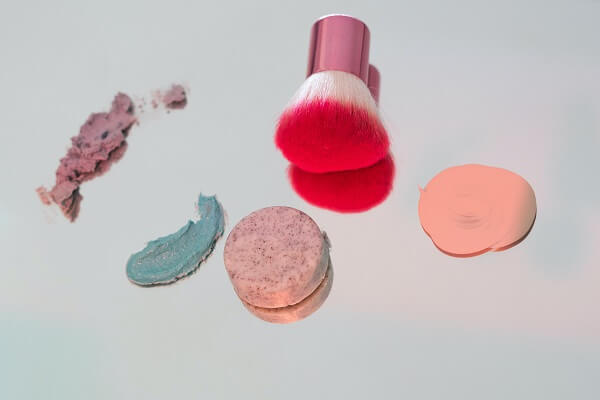Chemical Safety Facts has analyzed the main facts and applications about titanium dioxide.
Titanium, the ninth most common element in the Earth’s crust, is a metal commonly found in plants and animals. Titanium naturally interacts with oxygen to form titanium oxides, commonly found in ores, indigenous dusts, sands and soils.
What is Titanium Dioxide?
Many people are familiar with titanium dioxide as an active ingredient in sunscreen. Titanium dioxide works as a UV filtering ingredient in sunscreen – it helps protect a person’s skin by blocking absorption of the sun’s ultraviolet light that can cause sunburn and is also linked to skin cancer.

Uses & Benefits of Titanium Dioxide
Pure titanium dioxide is a fine, white powder that provides a bright, white pigment. Titanium dioxide has been used for a century in a range of industrial and consumer products, including paints, coatings, adhesives, paper, plastics and rubber, printing inks, coated fabrics and textiles, as well as ceramics, floor coverings, roofing materials, cosmetics, toothpaste, soap, water treatment agents, pharmaceuticals, food colorants, automotive products, sunscreen and catalysts.
Titanium dioxide is produced in two main forms. The primary form, comprising over 98 percent of total production, is pigment grade titanium dioxide. The pigmentary form makes use of titanium dioxide’s excellent light-scattering properties in applications that require white opacity and brightness. The other form in which titanium dioxide is produced is as an ultrafine (nanomaterial) product. This form is selected when different properties, such as transparency and maximum ultraviolet light absorption, are required, such as in cosmetic sunscreens.
Pigment-grade Titanium Dioxide
Pigment-grade titanium dioxide is used in a range of applications that require high opacity and brightness. In fact, most surfaces and items that are white and pastel, and even dark shades of color, contain titanium dioxide. Pigment-grate titanium dioxide is used in a range of applications, including:
1) Paints and Coatings: Titanium dioxide provides opacity and durability, while helping to ensure the longevity of the paint and protection of the painted surface.
2) Plastics, Adhesives and Rubber: Titanium dioxide can help minimize the brittleness, fading and cracking that can occur in plastics and other materials as a result of light exposure.
3) Cosmetics: Pigment-grade titanium dioxide is use in some cosmetics to aid in hiding blemishes and brightening the skin. Titanium dioxide allows for the use of thinner coatings of make-up material for the same desired effect.
4) Paper: Titanium dioxide is used to coat paper, making it whiter, brighter and more opaque.
5) Food Contact Materials and Ingredients: The opacity to visible and ultraviolet light offered by titanium dioxide protects food, beverages, supplements and pharmaceuticals from premature degradation, enhancing the longevity of the product. Specific classes of high purity pigment-grade titanium dioxide are also used in drug tablets, capsule coatings and as a decorative aid in some foods.
Ultrafine-grade, or Nanoscale Titanium Dioxide
Ultrafine-grades of titanium dioxide are most commonly used in the following specialty applications:
1) Sunscreen: Nanoscale titanium dioxide becomes transparent to visible light while serving as an efficient UV light absorber. Because the particle size is so small, nano-titanium dioxide does not reflect visible light, but does absorb UV light, enabling a transparent barrier that protects the skin from the sun’s harmful rays. According to the Skin Cancer Foundation, using sunscreens containing titanium dioxide can help prevent the occurrence of skin cancer.
2) Catalysts: Nanoscale titanium dioxide is used as a support material for catalyst applications. Major uses include in the automotive industry to remove harmful exhaust gas emissions and in power stations to remove nitrous oxides.
Answering Questions
Is titanium dioxide safe?
The U.S. Food and Drug Administration (FDA) has assessed the safety of titanium dioxide pigment as a color additive in food, drug and cosmetic applications, and as an ingredient in sunscreen products. FDA has also issued guidance clarifying the safe use of titanium dioxide pigment as a food colorant, and has stated that titanium dioxide may be safely used in cosmetics, including cosmetics intended for use around the eye.
What is titanium dioxide used in sunscreen?
Titanium dioxide is included in FDA’s list of acceptable active ingredients in sunscreen products. According to FDA, active ingredients in sunscreen such as titanium dioxide protect your skin from the sun’s harmful UV rays.
Are there any health concerns associated with exposure to titanium dioxide?
The International Agency for Research on Cancer (IARC) has classified titanium dioxide as “possibly carcinogenic to humans,” based on studies that showed increased lung tumors in rats associated with titanium dioxide inhalation. However, extensive studies on titanium dioxide industry workers do not suggest an association between occupational exposure to titanium dioxide and an increased risk for cancer in humans.
What are the differences between pigment-grade titanium dioxide and titanium dioxide nanomaterials?
Pigment-grade titanium dioxide is manufactured at a specific particle size distribution to optimize the scattering of visible light and enhance surface opacity. Titanium dioxide is produced primarily in the pigmentary form (over 98 percent of total production), which makes use of its excellent light-scattering properties for a range of applications that require opacity and brightness.
Titanium dioxide nanomaterials are purposefully made in a much smaller particle size distribution than pigmentary particles and are transparent and more effective as UV absorbers or photocatalysts. The transparency and UV absorbance allow for effective use as a protective ingredient for sunscreens.
Why is titanium dioxide used in toothpaste?
Titanium dioxide is often used to impart whiteness to food products, cosmetics and personal care items, like toothpaste. The U.S. Food and Drug Administration (FDA) has assessed the safety of titanium dioxide as a color additive and has issued regulations approving the ingredient for these purposes.
Source: ChemicalSafetyFacts.org
